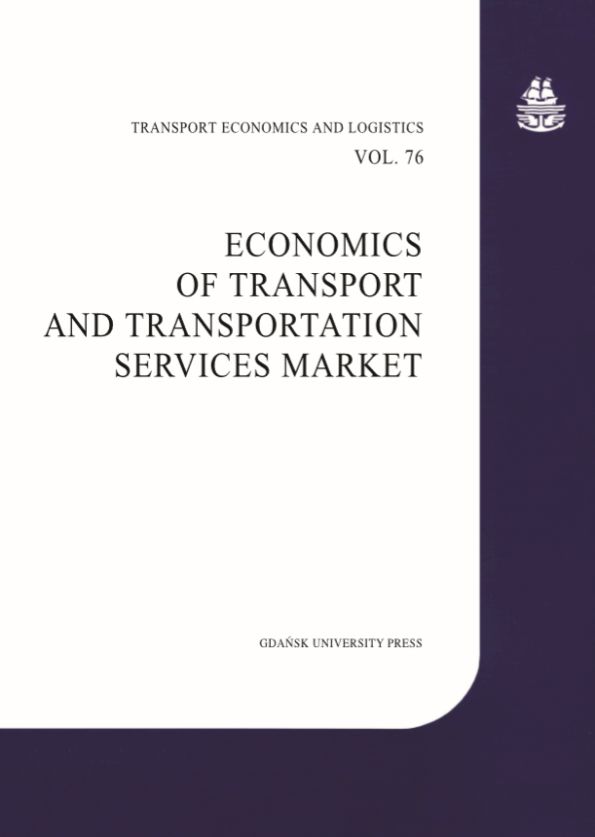Rational areas of combined transport technologies application for container delivery on the Caspian-Black sea route of the new Silk Road
DOI:
https://doi.org/10.26881/etil.2018.76.10Keywords:
new silk road, combined transport, ferry lines, simulation Java SEAbstract
The article analyzes the main routes for delivering goods from China to the EU countries. The main transit flow in this direction is cargo in containers. The competitive Caspian-Black Sea route of the New Silk Road through Ukraine with the use of combined rail and sea transportations has been analyzed. Two delivery options are considered – using ferry ship and feeder ship lines. Simulation was used to evaluate the route parameters. Recommendations on the rational areas of combined transport technologies application on this route are given.
Downloads
References
Makarov, I. and Sokolova, A. (2016). The Eurasian Economic Union and the Silk Road Economic Belt: Opportunities for Russia. International Organisations Research Journal, 11(2), pp. 40–57.
Miecznikowski, S. and Radzikowski, T. (2017). Over Capacity Of Container Shipping as a Challenge to Rail Silk Road Competitiveness. Zeszyty Naukowe Uniwersytetu Gdańskiego. Ekonomika Transportu i Logistyka, 70, pp. 121–132.
Myronenko, V., Matsiuk, V., Vysotska, H. and Aleksiichuk, N. (2018). Modelyuvannya tranzytnykh transportnykh potokiv [Modeling of transit traffic flows]. Avtoshlyakhovyk Ukrayiny, 6, pp. 17–22.
Sárvári, B. and Szeidovitz, A. (2016). The Political Economics of the New Silk Road. Baltic Journal of European Studies, 6(1).
SeaRates. (2018), Logistics Explorer. Available from https://www.searates.com/ru/reference/portdistance/ [Accessed 13 March 2018].
Matsiuk V. (2017), A study of the technological reliability of railway stations by an example of transit trains processing, Eastern–European Journal of Enterprise Technologies: Control processes, 1.
Seo, Y., Chen, F. and Roh, S. (2017), Multimodal Transportation: The Case of Laptop from Chongqing inChina toRotterdam in Europe, TheAsian Journal of Shipping and Logistics, 33(3).
Silin, Y., Kapustina, L., Trevisan, I. and Drevalev, A. (2017), China’s economic interests in the “One Belt, One Road” initiative, SHS Web of Conferences, 39.
Toropov, B. and Myronenko, V. (2017), Kontseptualni polozhennia vprovadzhennia zaliznychnoho shvydkisnoho spoluchennia porty Odesy – zakhidnyi kordon Ukrainy (Implementation ofrailway conceptual speed communications port of Odessa – Ukraine western border), Zbirnyk naukovykh prats Derzhavnoho ekonomiko-tekhnolohichnoho universytetu transportu. Seriia «Transportni systemy i tekhnolohii», 30.
Vilke, S., Brčic, D. and Kos, S. (2017), Northern and Southern European Traffic Flow Land Segment Analysis as Part of the Redirection Justification, TransNav, theInternational Journal on Marine Navigation and Safety of Sea Transportation, 11(4).
Wagener, N. (2016), Intermodal transport in Europe – opportunities through innovation. Scientific Journal of Logistics, 10(4). Available from http://www.logforum.net [Accessed 14 March 2018].

 Academic Scientific Journals
Academic Scientific Journals



